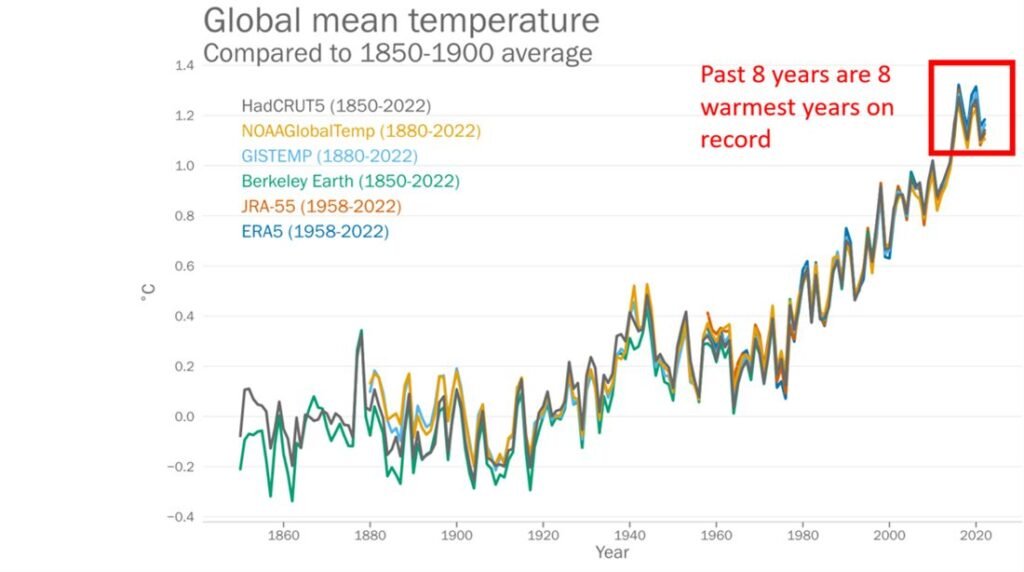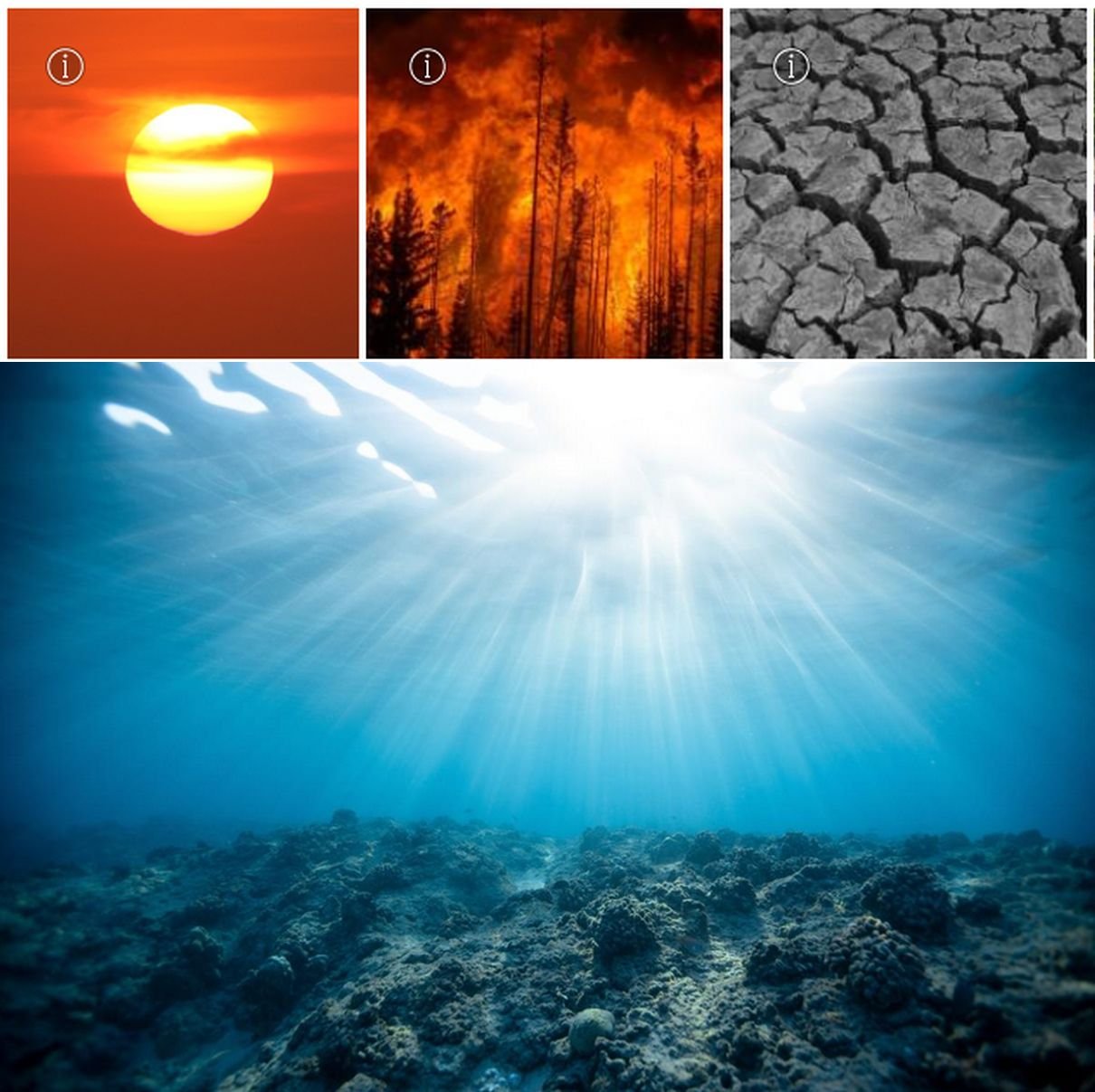Climate change continues to develop in 2022, from mountain summits to ocean bottoms, according to a World Meteorological Organisation (WMO) annual report. Droughts, floods, and heatwaves wreaked havoc on communities throughout the globe, costing billions of dollars. Antarctic sea ice has shrunk to its lowest extent on record, while the melting of some European glaciers was, literally, off the charts.

The State of the Global Climate 2022 report depicts the planetary scale changes produced by record amounts of heat-trapping greenhouse gases on land, in the ocean, and in the atmosphere. Despite the cooling effect of a La Nia event during the last three years, the years 2015-2022 were the eight highest on record for global temperature. Melting glaciers and sea-level rise — which again reached new highs in 2022.
While greenhouse gas emissions continue to grow and the climate continues to change, extreme weather and climate events continue to have a devastating impact on people all over the world. For example, in 2022, tens of millions of people were affected by chronic drought in East Africa, record-breaking rains in Pakistan, and record-breaking heatwaves in China and Europe, resulting in food shortages, mass migration, and billions of dollars in loss and destruction.

Hazardous climate and weather-related occurrences prompted fresh population displacement and exacerbated conditions for many of the 95 million people who were already displaced at the start of the year.
The paper also focuses on ecosystems and the environment, demonstrating how climate change affects natural recurrent phenomena such as tree blossoming and bird migration. For example, flowering of cherry blossom in Japan has been documented since AD 801 and has shifted to earlier dates since the late nineteenth century due to the effects of climate change and urban development. In 2021, the full flowering date was 26 March, the earliest recorded in over 1200 years. In 2022, the flowering date was 1 April.
Reference- National Geographic, World Meteorological Organization, Clean Technica






